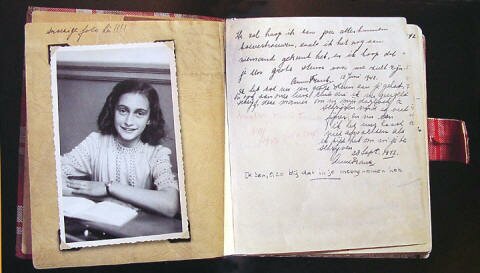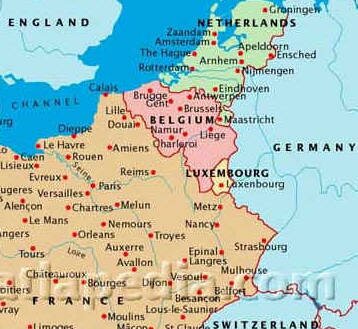|
YOM HASHOAH AND THE HOLOCAUST
WE MUST NEVER FORGET
With the destruction of Jerusalem by the Romans about two thousand years ago, the Jews lost their homeland, Israel. Since then, Jews have wandered from country to country, throughout the world. Wherever Jews settled, in whatever nation that would give a safe haven to this exiled people, Jews contributed knowledge and wealth but were confronted with Anti-Semitism.
Anti-Semitism is a word Jews have become very familiar with. It is a peculiar breed of hatred towards Jews. It means a hatred of Jewish people, their religion, and their culture. It is caused by fear and a lack of understanding. Its symptoms are name-calling, unfair treatment, discrimination, and violence.
The word "Anti-Semitism" is a fairly new word, coined in 1879, but the disease of "Anti-Semitism" has been around for as long as Jews have wandered from country to country. As strangers wherever they lived, Jews were easy targets to blame for almost anything: Disease, hunger, war, and unemployment - all these problems were blamed on the Jews.
Even when Anti-Semitism seems to be cured, a Jew knows that at any time the symptoms of this disease can rear their ugly head once more: sometimes in the form of graffiti on a synagogue, or name-calling as a car passes by. The burning of Jewish books, the pogroms of Eastern Europe that wiped out whole villages of Jews, the Crusades and the Inquisition these are all the symptoms of Anti-Semitism.
In the 1920's, many German Jews thought that Anti-Semitism was a thing of the past. They thought they were safe. This was the "enlightened" age. The Jews of Germany were citizens of the "Fatherland". They spoke the language, dressed in the current styles, and paid taxes, like any other German. They were part of the German society. They were the doctors, lawyers, teachers and even soldiers. They voted as German citizens. But they ignored the telltale signs of Anti-Semitism that lurked in the shadows of their assimilation into German society.
In 1933, when Adolf Hitler came to power, Germany was suffering economic hardship. Hitler's plan was to use the Jews as scapegoats (those that are made to bear the blame of others) to rally the pride of all German citizens. With the aid of his Nazi Party, and under the slogan "Jews Are Our Misfortune," Hitler made plans to end "The Jewish problem."
This is what Hitler did:
Jews were no longer citizens of Germany.
Their businesses were boycotted and their insurance was cancelled.
Jewish children could no longer attend German public schools.
Jewish professionals were forbidden to practice their trades.
Most humiliating of all was the symbolic six-pointed yellow star they were forced to wear in public.
Even as anti-Jewish laws took hold, most Jews didn't want to realize the true danger that lurked about. Relatively few fled Germany when they had the chance. There had always been some degree of anti-Jewish sentiment in Germany. Most Jews expected this wave to fall back in place with time. The early days of Nazi Germany showed all the signs. But by the time the mortal danger took hold, it was too late to escape.
Humiliation quickly escalated to violence as Anti-Semitism took hold. It was November of 1938 when two-days of terror swept throughout Germany. Synagogues and Jewish businesses were destroyed. Over 30,000 Jews were arrested. This pogrom, (an organized, often officially encouraged massacre or persecution of a minority group), is remembered as "Kristallnacht" because of all the broken glass left on the streets of Germany. This was only the beginning of a pattern of organized destruction that would repeat throughout Europe, wherever Nazi Anti-Semitism spread.
Discrimination and violence were only the beginning. It was to get worse much worse. And for those who did not or could not flee Europe, ghettos and concentration camps were the "final solution."
Nazis forced Jews out of their homes to large towns and small cities surrounded by barbed-wire fences and armed soldiers. These cities were called ghettos. The conditions were crowded and unsanitary as thousands of Jews were forced to resettle. Life was desperate.
In the end, those who did not die of starvation in the ghetto, met death in the concentration camps. These prison towns were the last stop for "enemies of the state." Just being Jewish was enough to qualify. As prisoners arrived, the weak were immediately weeded out from those healthy and strong. The latter were assigned work detail. Some groups were sent into town to work in factories as slave labor. Others were assigned jobs in the camp itself. Food was scarce and meals were minimal. Disease was rampant. Those who were too weak were never heard from again.
It didn't matter what type of Jew you were: rich or poor; religious or secular, child or adult the Nazis went back three generations to seek out Jewish ancestry. Even a Jew who denied his heritage or who married outside the faith, was weeded out by the Nazis and forced to face what generations of Jews in exile had faced time after time: a Jew is always a Jew when facing Anti-Semitism.
It wasn't enough to force Jews out of Germany or to punish Jews with forced labor. Extermination was the Nazis' "final solution." In "death camps" such as Auschwitz, Buchenwald, and Treblinka, poison gas was the method used in the organized mass murder of "enemies of the state." In the end, six million Jews and millions of other innocent people were dead.
When the camps were liberated in 1945, the world was shocked by the horror and intensity of what had occurred--the organized execution of millions of people. This savage, systemized death sentence had never been witnessed in the history of the world. Two thirds of European Jews lay dead. This was an unimaginable, horrible and unbelievable tragedy -- a Holocaust.
Out of the ashes of the Holocaust the State of Israel was born in 1948. After two thousand years the Jewish people had their own land again. Many of those who came Israel were survivors of the Holocaust.
It is important for us to seek out the memories of this tragic time. Many survivors find it too painful to remember and too hard to express their innermost feelings about this time. Some hope to spare their loved ones the pain, fear and sorrow. But as time passes and witnesses to the Holocaust fade with the years, the written word is no replacement for the story told first person by an actual survivor.
We must keep the memory of the Holocaust alive in order to prevent such a catastrophe from happening again. Films and television programs have been produced, books and magazine articles have been written, which portray many people's experiences of the Holocaust. The stories of survivors are being recorded in their own words, as part of a worldwide program.
In 1959 Israel passed a special law creating YOM HASHOAH, Holocaust Remembrance Day, to be observed on the same day each year on the Jewish calendar. This date coincides with the beginning of the revolt against the Nazis by Jews in the Warsaw Ghetto in 1943. It usually occurs in April.
In Israel, YOM HASHOAH is a solemn day. Places of entertainment are closed and memorial ceremonies are held throughout the country. Children of survivors and their families gather together with the general public to take part in the memorial ceremony in which six torches, representing the six million murdered Jews, are lit.
As the years pass, however, those who were actual survivors of the Nazi brutality grow older and die. Soon there will be no one left alive who personally lived through the Holocaust. So, it becomes even more important to remember those terrible years and how they began, and to remember how cruelty, hatred and discrimination led to violence, death and destruction.
On YOM HASHOAH Jews around the world will pause each year to remember . . . to remember NEVER TO FORGET.
|


